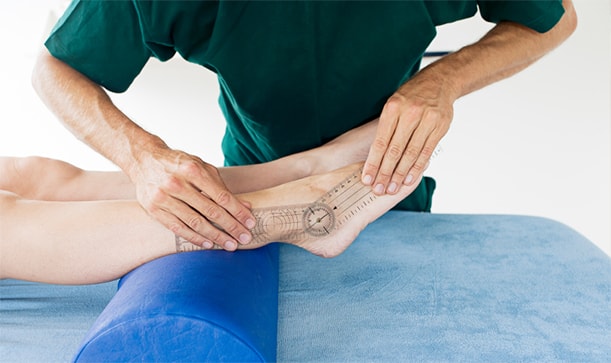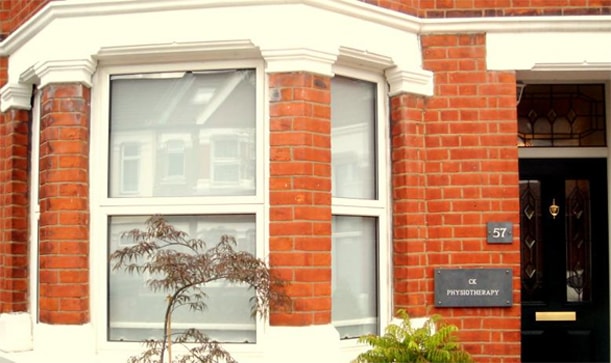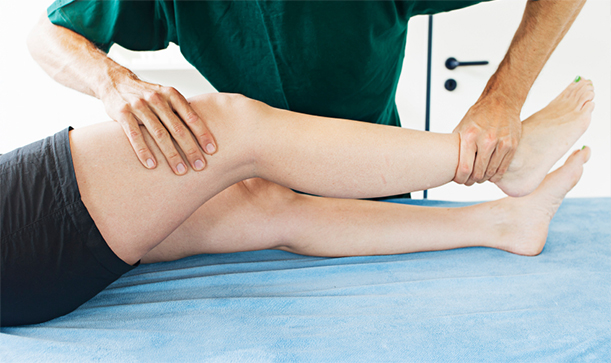CK Physiotherapy
AREAS COVERED
W7, W5, W13, Ealing, West London
57 Elthorne Avenue
Hanwell, W7 2JY
T: 020 8566 4113
M: 079 572 46185
E: info@ckphysio.co.uk
Location / Parking
We are situated in Hanwell, between Boston Manor Road and Northfields Avenue, south of the Uxbridge Road.57 Elthorne Avenue
Hanwell, W7 2JY
There are parking restrictions Mon - Fri 9-10am and 2-3pm. If you need a permit during this time please inform your therapist when you arrive. There are no parking restrictions at other times.
Opening Times
Please phone the number above during working hours to make an appointment. Our reception service will be happy to book your session.
London Underground / Bus Services
London Underground
10 min. walk from Boston Manor Tube Station.
15 min. walk from Northfields Tube Station.
Bus Service
E8, E3, E2, 207, 607, 83
Request Call Back
Our Blog
New Physiotherapy Techniques and Approaches
By: BryanKelly (Psst, View author in Google Plus) Date: Apr 12th, 2022We all know that physiotherapy is the treatment of physical conditions by physical means.
Most physiotherapy techniques include the use of exercise, massage, and other manual methods to improve function and reduce pain.
Yet, in recent years, there’s been a shift in the way that physiotherapy is practised.
New physiotherapy treatment approaches have been developed to help you recover quicker with the consideration of the body and mind working as one.
Though old-fashioned treatments like ice and heat packs shouldn’t be forgotten, newer physiotherapy techniques and approaches are often more effective.
Here we’ll discuss:
-
New physiotherapy techniques V traditional physiotherapy treatment
-
How physiotherapists combine new approaches, exercises, and manual therapy
-
Why virtual physio is the first step to quicker recovery
What’s the difference between traditional physiotherapy treatment and newer techniques?
Physiotherapy is a profession that has been around for over a hundred years.
Traditional physiotherapy, typically, is often seen as medical treatment if you’ve been injured and require rehabilitation.
Newer physiotherapy techniques, on the other hand, are seen as a preventative measure for those who want to avoid injury altogether.
Being more focused on the whole body, new physiotherapy techniques are more holistic in nature. And have evolved to include a range of different treatments for a variety of injuries, illnesses and debilitating conditions.
It’s important to note that new techniques don't replace traditional physiotherapy treatment, but rather complement it.
Some examples of new physiotherapy techniques:
-
Acupuncture: This technique involves inserting needles into specific points on your body to reduce pain, release tension, and promote relaxation.
-
Dry needling: This method involves inserting needles into your muscles to release muscle tightness or trigger points that cause pain, by releasing tension or stimulating nerve endings in the muscles.
-
Ultrasound therapy: This therapy uses sound waves to stimulate tissue healing and relieve pain.
-
Interferential therapy: This therapy uses electrical currents to stimulate tissue healing by increasing blood flow to the area.
-
Infrared heat/light: the emitted infrared light energy, invasively penetrates the skin and creates a heating effect. This stimulates circulation, relaxation of muscles and pain reduction.
-
Kinesiology tape: promoting the natural healing process, this tape aids lymphatic drainage and reduces recovery time. It’s been widely used by both amateur and professional sportspeople.
-
Whole-body vibration therapy: standing, sitting, or lying, a powerful medical vibration plate is used to stimulate tissue healing and increase blood flow, muscle tone and bone density.
-
Graston Technique: The Graston Technique is an approach that uses metal instruments to massage soft tissue and restore healthy tissue alignment. It’s often used on athletes who suffer from tight muscles or ligaments as well as those with chronic pain in their back, neck, or joints.
-
Graded exposure: This technique is used when you need to build up your confidence and decrease pain sensitivity levels when recovering from an injury or surgery. Through physiotherapy treatment, you’ll slowly and progressively expose your body to movement with the potential to reduce pain-related fear.
-
Graded motor imagery (GMI): is a type of physical therapy that involves training your brain away from pain. Using imagery, real or imagined, you coach your body to move pain-free without actually moving!
How physiotherapists manage treatment for patients
A physiotherapist is a healthcare professional specialising in the diagnosis and treatment of physical problems, especially those affecting movement or muscles.
With the increasing demand for natural treatments without side effects and an ageing population. It’s important to look at the latest in physiotherapy techniques and approaches to help restore function, improve mobility, and reduce pain.
Being experts in biomechanics, kinesiology, exercise physiology and neuroscience; physiotherapists understand the importance and benefits of combining both new and traditional physiotherapy treatments, approaches, and methods.
Combination physiotherapy approaches may include:
-
Advice: is provided to enable patients to learn more about their condition, and how they can help themselves or avoid further injury. They may also recommend assistive devices for those who need them.
-
Exercise: is the most common treatment for many conditions. It helps patients improve their strength, range of motion and balance.
-
Stretching: to relieve tightness and improve flexibility and range of motion.
-
Manual therapy: involves hands-on manipulation of soft tissue to help loosen tight muscles, reduce pain and inflammation, and increase mobility.
-
Electrotherapy: is a treatment that uses electric currents to stimulate muscles or nerves to relieve pain.
-
Self-care: activities such as meditation, deep breathing, or gentle movements including yoga may assist in your healing and are recommended as complementary treatments.
The benefits of newer physiotherapy techniques are that they’re less invasive and more targeted than the older methods.
They have an increased success rate because they can be tailored to your individual needs.
The first step in any physiotherapy treatment is an assessment.
A consultation will be conducted to find out what the problem is and establish which treatment approach will be best for you.
This meeting will determine what kind of exercises are appropriate for your condition and what goals you may want to achieve.
It’s important that you and your physiotherapist are aware of your limitations to avoid further injury.
Proper rest and recovery time are also essential for achieving good results with physiotherapy treatment.
How to choose which physiotherapy is right for you?
Choosing the right physiotherapy treatment depends on your individual needs and what you want to achieve.
Physiotherapy techniques can help with a wide range of conditions, from low back pain to arthritis and chronic pain.
It’s often used to help people recover from injury and as an alternative to surgery. And although not a substitute for medicine, it can be helpful in managing the symptoms and effects of pain to reduce the reliance upon pain relief.
As discussed, there are many different types of physiotherapy available such as manual, exercise, electrotherapy, aquatic therapy etc., so it's important to find out which one suits you best.
Accessing physiotherapy couldn’t be easier. You can go directly to a physiotherapy clinic like CK Physio, go through your GP, or another medical professional.
Accessing physiotherapy virtually
Virtual consultations are becoming more popular in the healthcare industry, having the potential to change the way we access healthcare in general.
As a leading provider of physiotherapy in London, CK Physio has been using this technology to provide our patients with quick and easy access to physiotherapy treatment and services.
Have a virtual physiotherapy consultation before attending a face-to-face session
The idea behind accessing physiotherapy virtually is to save time for both you and your therapist.
It’s a safe place to discuss any fears and ensure that you can see what physiotherapy treatment plan is best before deciding on one.
Use our online booking form to book your first virtual appointment and chat with CK Physio from the comfort of your own home.





